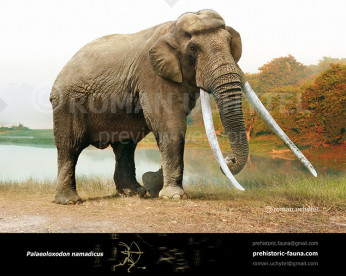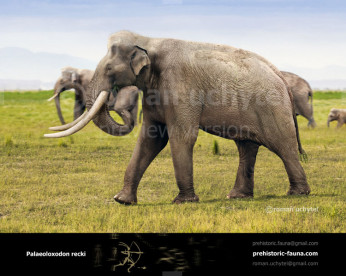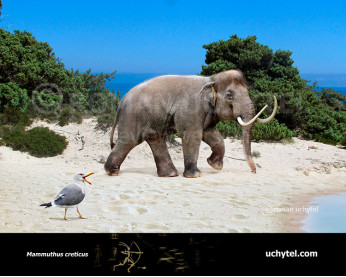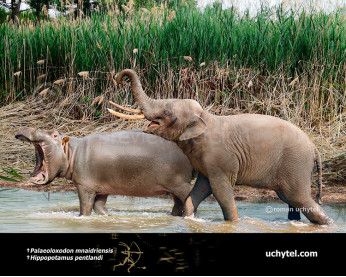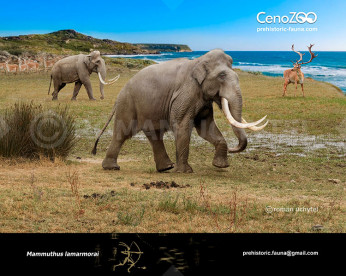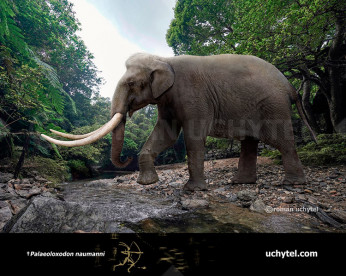Cyprus dwarf elephant (Palaeoloxodon cypriotes)
441441
Cyprus dwarf elephant (†Palaeoloxodon cypriotes (Bate, 1904))
Order: Proboscidea
Family: Elephantidae
Genus: †Palaeoloxodon
Dimensions: length - 2,5 m (with tusks), height - 100 -110 сm, weight - 200 kg
Temporal range: during the Pleistocene until around 11,000 years BC (the island of Cyprus).
The Cyprus dwarf elephant (Palaeoloxodon cypriotes) is an extinct species that inhabited the island of Cyprus during the Pleistocene until around 11,000 years BC. Remains comprise 44 molars, found in the north of the island, seven molars discovered in the south-east, a single measurable femur and a single tusk among very sparse additional bone and tusk fragments. The molars support derivation from the Straight-tusked elephant (Palaeoloxodon antiquus), that inhabited Europe since 780,000 years ago, who reached the island presumably during a Pleistocene glacial maximum when low sea levels opened terrestrial corridors between Cyprus and Asia Minor. During subsequent periods of isolation the population adapted within the evolutionary mechanisms of insular dwarfism, which the available sequence of molar fossils confirms to a certain extent. The fully developed Palaeoloxodon cypriotes weighed not more than 200 kg, a weight reduction of 98% from its ancestors which weighed about 10 tonnes. Whether the species extinction is to be attributed to the arrival of humans on the island remains debated. The species represented a sizable food source, but was easily overcome by contemporary hunter-gatherer populations.
Molar comparison supports the notion that the species descended from the straight-tusked elephant, this much smaller species inhabited Cyprus and some other Mediterranean islands after the Messinian salinity crisis, during the Late Pleistocene. The factors responsible for the dwarfing of island mammals are thought to include the reduction in available food, predation and competition. The Cyprus dwarf elephant roamed the world at least until 11,000 BC.
Payment
You may use multiple payment methods to buy image such as credit cards, PayPal and bank transfer.
Cyprus dwarf elephant (†Palaeoloxodon cypriotes (Bate, 1904))
Order: Proboscidea
Family: Elephantidae
Genus: †Palaeoloxodon
Dimensions: length - 2,5 m (with tusks), height - 100 -110 сm, weight - 200 kg
Temporal range: during the Pleistocene until around 11,000 years BC (the island of Cyprus).
The Cyprus dwarf elephant (Palaeoloxodon cypriotes) is an extinct species that inhabited the island of Cyprus during the Pleistocene until around 11,000 years BC. Remains comprise 44 molars, found in the north of the island, seven molars discovered in the south-east, a single measurable femur and a single tusk among very sparse additional bone and tusk fragments. The molars support derivation from the Straight-tusked elephant (Palaeoloxodon antiquus), that inhabited Europe since 780,000 years ago, who reached the island presumably during a Pleistocene glacial maximum when low sea levels opened terrestrial corridors between Cyprus and Asia Minor. During subsequent periods of isolation the population adapted within the evolutionary mechanisms of insular dwarfism, which the available sequence of molar fossils confirms to a certain extent. The fully developed Palaeoloxodon cypriotes weighed not more than 200 kg, a weight reduction of 98% from its ancestors which weighed about 10 tonnes. Whether the species extinction is to be attributed to the arrival of humans on the island remains debated. The species represented a sizable food source, but was easily overcome by contemporary hunter-gatherer populations.
Molar comparison supports the notion that the species descended from the straight-tusked elephant, this much smaller species inhabited Cyprus and some other Mediterranean islands after the Messinian salinity crisis, during the Late Pleistocene. The factors responsible for the dwarfing of island mammals are thought to include the reduction in available food, predation and competition. The Cyprus dwarf elephant roamed the world at least until 11,000 BC.

-cypriotes-797x638.jpg)
-797x638.jpg)
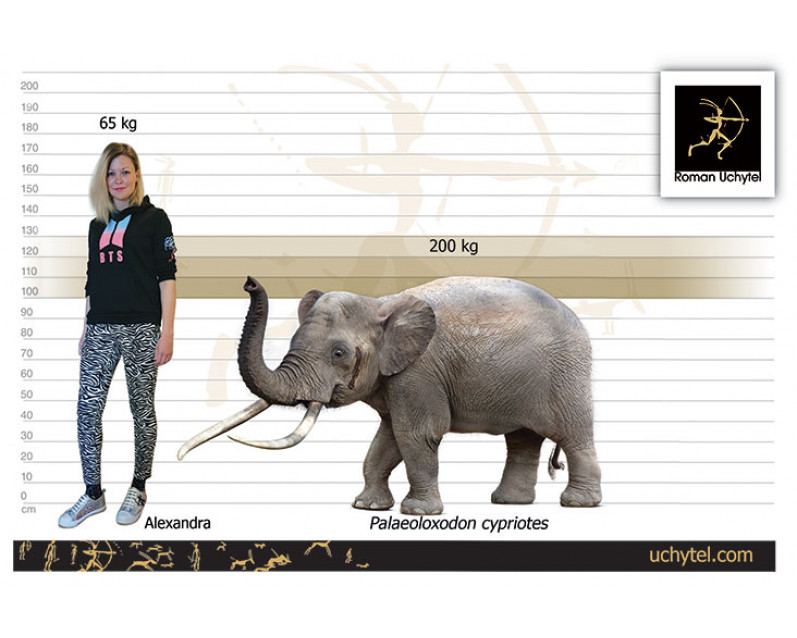
-cypriotes-70x56.jpg)
-70x56.jpg)

-346x277.jpg)
